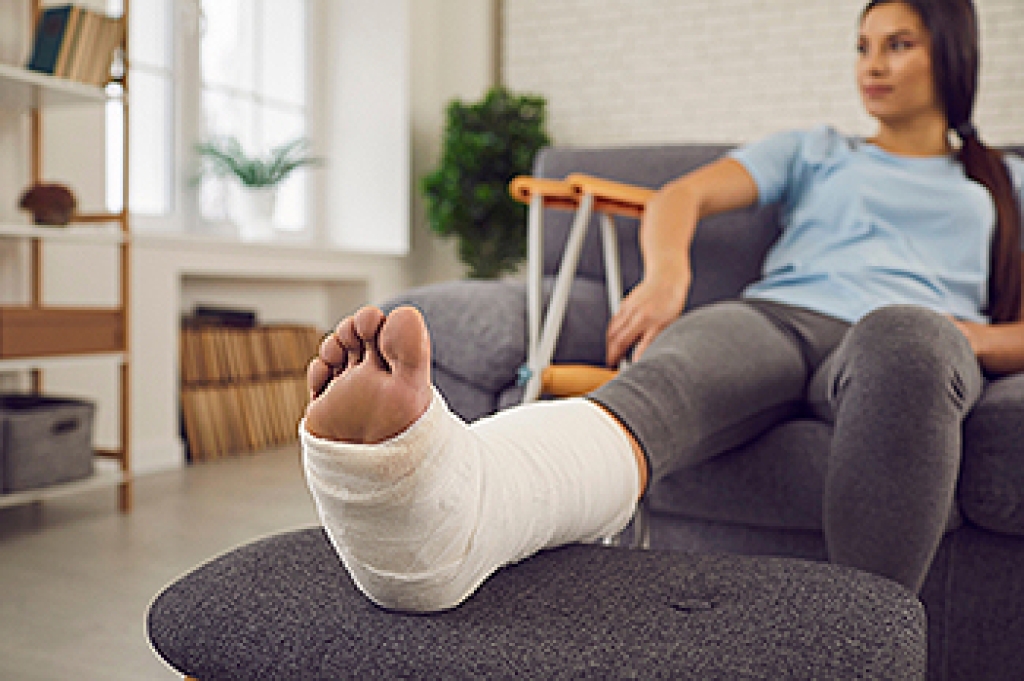
If you have a fractured or broken bone in the feet or big toe, this ought to be taken seriously. A fractured foot can be potentially very painful and can significantly impair one’s ability to engage in physical activities. One important “don’t” associated with fractured feet is not to drive when you have a broken foot. Although it might seem obvious, it bears repeating that driving with a broken foot, especially the right foot, is extremely dangerous because a broken foot may not be able to properly reach and press the gas or brake pedals. On the other hand, an important “do” associated with broken feet is to remember to go to the doctor immediately if you notice any dangerous symptoms due to the fracture. For example, if you notice a dramatic drop in temperature or a feeling of numbness in the affected foot, immediate medical attention ought to be sought. Schedule an appointment with a podiatrist today to learn more about fractured feet.
A broken foot requires immediate medical attention and treatment. If you need your feet checked, contact Mital Patel, DPM from South Shore Podiatry. Our doctor can provide the care you need to keep you pain-free and on your feet.
Broken Foot Causes, Symptoms, and Treatment
A broken foot is caused by one of the bones in the foot typically breaking when bended, crushed, or stretched beyond its natural capabilities. Usually the location of the fracture indicates how the break occurred, whether it was through an object, fall, or any other type of injury.
Common Symptoms of Broken Feet:
- Bruising
- Pain
- Redness
- Swelling
- Blue in color
- Numbness
- Cold
- Misshapen
- Cuts
- Deformities
Those that suspect they have a broken foot shoot seek urgent medical attention where a medical professional could diagnose the severity.
Treatment for broken bones varies depending on the cause, severity and location. Some will require the use of splints, casts or crutches while others could even involve surgery to repair the broken bones. Personal care includes the use of ice and keeping the foot stabilized and elevated.
If you have any questions, please feel free to contact our office located in Massapequa, NY . We offer the newest diagnostic and treatment technologies for all your foot care needs.